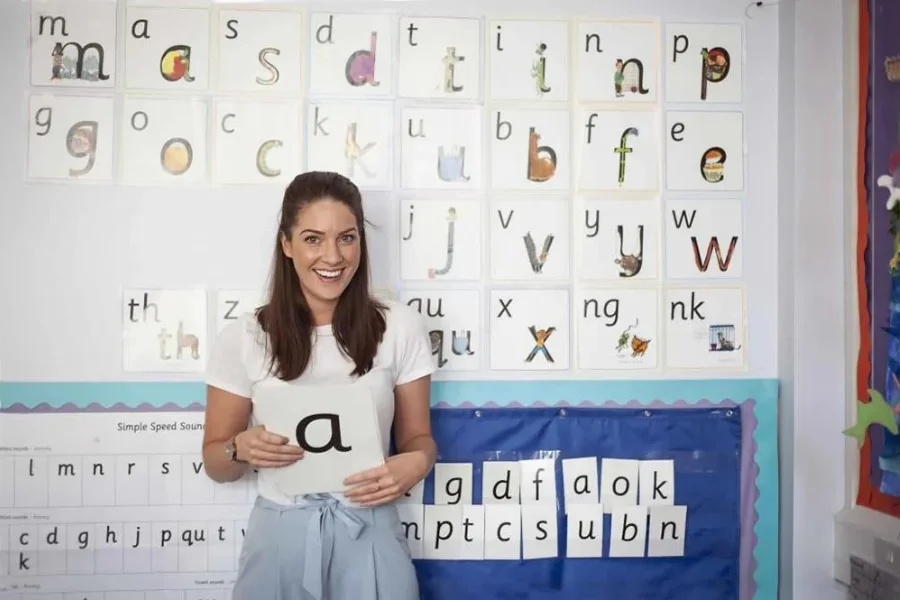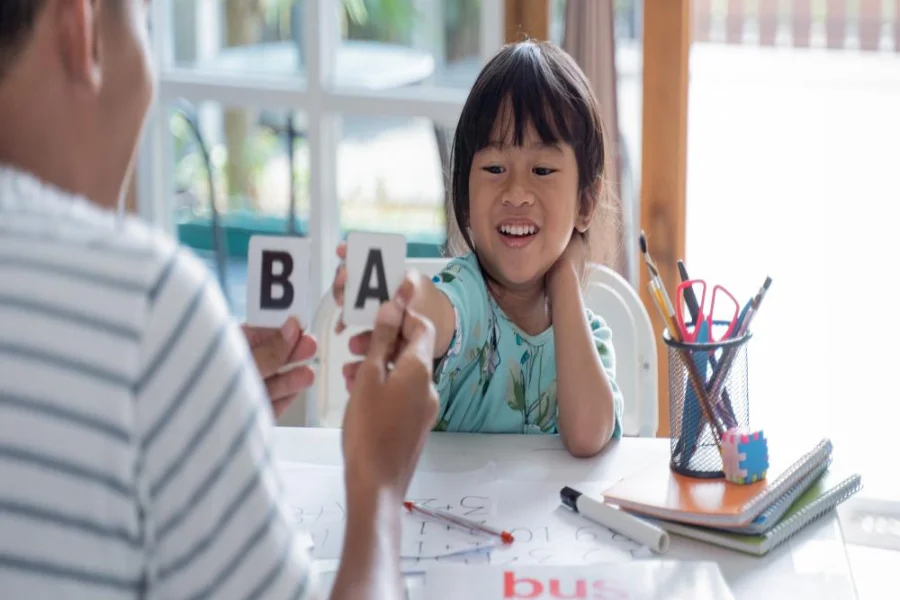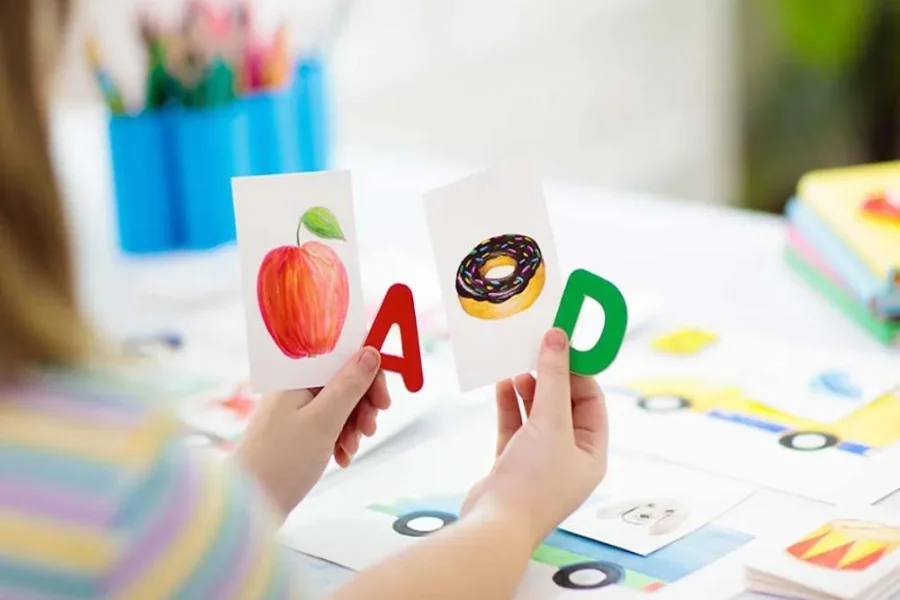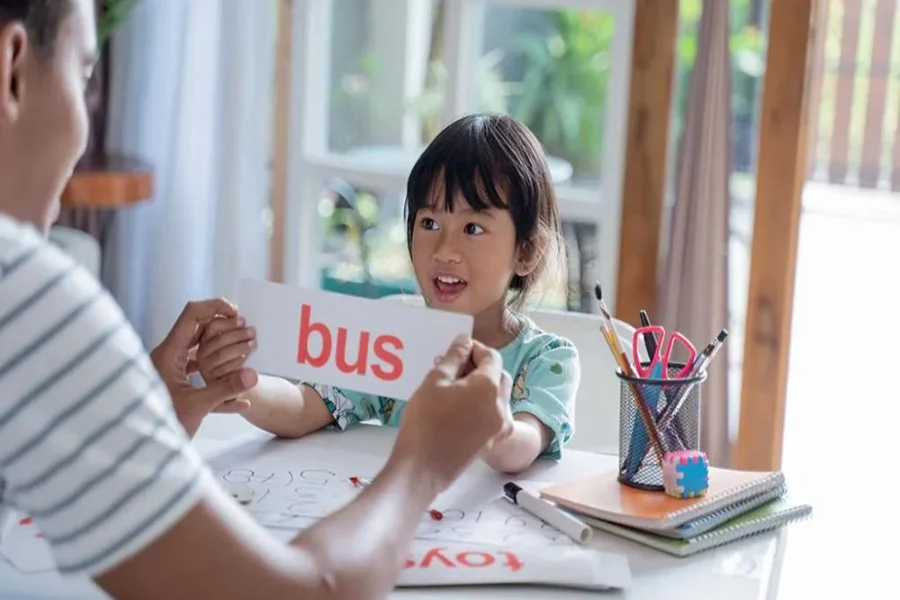How to Teach Phonics to Preschool

Source: ruthmiskin
How to Teach Phonics to Preschool
Discover innovative techniques and approaches to present young students with the domain of letters and sounds through this blog. Phonics methodology not only improves their reading and script abilities but also nurtures a love for linguistics from a young age.
By teaching Phonics in modest, interesting ways, parents and teachers can make phonics learning a fun and delightful experience for preschoolers. This blog will help aspiring phonics educators discover some practical approaches for How to Teach Phonics to Preschoolers.
Table of Content
- Start with Basic Letter Recognition
- Introduce Letter Sounds
- Blend Sounds into Simple Words
- Use Phonics Games and Activities
- Practice Letter Sound Correspondence
- Introduce Sight Words
- Encourage Word Building with Letters and Sounds
- Use Rhymes and Songs to Reinforce Learning
- Read Aloud Books that Focus on Phonetic Patterns
- Regularly Review and Reinforce Previous Lessons
- Phonics Training for Teachers

Source: net
Start with Basic Letter Recognition
The foremost step in How to Teach Phonics to Preschool infants is to Start with Basic Letter Recognition and support them in identifying and naming the letters of the alphabet. Announce letters using bright flashcards, alphabet visual aids, or attractive letters. For example, show a card with the letter ‘A’ and say its name. Activities like tracing letters in sand or forming them with play dough can also be engaging. This foundational skill sets the stage for understanding that letters have specific sounds.
Introduce Letter Sounds
Once children recognize the letters, Introduce Letter Sounds to them. This is crucial for phonics education. Use actual instances, like ‘a’ is for ‘apple’, ‘b’ is for ‘ball’. Communicating techniques, such as corresponding letters to conforming sound-creating substances, help harden this association. Phonics songs that associate sounds with letters can also be an entertaining way to reinforce learning.
Blend Sounds into Simple Words
Blend Sounds into Simple Words. Begin with simple and easy CVC (consonant-vowel-consonant) words like ‘man’, ‘den’, or ‘hop’. Highlight every sound (‘c-a-t’) and then merge them to compose the word. Use optical utilities or carnal activities, like hopping from one letter to the subsequent, to make the combination procedure more appealing for youngsters.
Use Phonics Games and Activities
Use Phonics Games and Activities to Teach Phonics to Preschool children and make phonics knowledge fun and collaborative. For instance, use a ‘fishing game’ where kids ‘catch’ letters and mix them into spelling, or a ‘sound identical game’ where learners match substances to their initial sounds. These techniques strengthen their phonics abilities in a pleasurable and unforgettable way.

Source: cdnparenting
For any questions about the Phonics course, contact VES at +919869866277/ +919869546913.
To fetch a copy of the Phonics Course brochure, please Click Here.
Practice Letter Sound Correspondence
Practice Letter Sound Correspondence regularly with various activities. For instance, ask children to pick out objects that start with a certain sound or have them sound out letters in everyday objects like signs and labels. This practice helps solidify their understanding of how letters and sounds are connected.
Introduce Sight Words
Sight words are common words needed to be identified only by sight and are difficult to sound out. For instance, ‘the,’ ‘to,’ ‘you,’ and ‘all’ are sight words that are a part of early reading. Introduce Sight Words using repetitious reading, flashcards, and writing activities. Embedding sight words in simple sentences to Teach Phonics to Preschoolers can help them understand their context and usage.
Encourage Word Building with Letters and Sounds
Employ letter tiles or magnetic letters to create words. These engaging activities help children learn how a simple change of a letter in a word changes the entire word along with its meaning. For instance, the word ‘rat’ changes to ‘fat’ when ‘r’ is changed to ‘f.’ Such activities to Encourage Word Building with Letters and Sounds help enhance their Phonics understanding and aid in word construction.
Use Rhymes and Songs to Reinforce Learning
Use Rhymes and Songs to Reinforce Learning as they are fantastic means to Teach Phonics to Preschool children. They make the learning process enjoyable and easy to remember. Songs or rhymes focusing on specific phonetic sounds or patterns can help strengthen what the children have learned in an entertaining rhythmic way.
Read Aloud Books that Focus on Phonetic Patterns
Choose books with simple, repetitive phonetic patterns suitable for preschoolers. Read Aloud Books that Focus on Phonetic Patterns as it helps them hear and understand different phonetic sounds and patterns. Books with rhyming words or predictable phonetic structures are especially beneficial to Teach Phonics to Preschoolers and for reinforcing phonics concepts.
Regularly Review and Reinforce Previous Lessons
Constant evaluation and strengthening are important in phonics knowledge. Reconsider preceding lessons to safeguard toddlers’ recall of what they’ve erudited. Regularly Review and Reinforce Previous Lessons using different methods, like flashcards, oral criticism, or cooperative games, to make the analysis sessions different and attractive. Regular strengthening support in solidifying their phonics abilities and formulates them for additional progressive literacy ideas.
For any questions about the Phonics course, contact VES at +919869866277/ +919869546913.
To fetch a copy of the Phonics Course brochure, please Click Here.

Source: cdn
Phonics Training for Teachers
In today’s instructive background, the significance of operative phonics training for youngsters cannot be exaggerated. Identifying this, Vidhyanidhi Education Society provides a Phonics Teacher Training Course that is accurately intended to address all queries connected to How to Teach Phonics to Preschool Kids. This course is an ideal choice for teachers looking to improve their instruction approaches and safeguard a robust basis in phonics for their young students.
Key Features of the Phonics Training for Teachers Program:
Intensive Training Spanning 18 Hours
Phonics Training for Teachers at VES offers a comprehensive 18-hour training, equipping aspiring teachers with the skills and knowledge of How to Teach Phonics to Preschoolers.
Adherence to UK-based Synthetic Phonics Teaching Methodology
The Phonics Training for Teachers at VES is inspired by the popular UK-based Synthetic Phonics Teaching Methodology. This approach is globally recognized for its efficacy in How to Teach Phonics to Preschoolers, ensuring that educators are learning the most advanced and effective methods.
Innovative Teaching Aids
VES’s Phonics Training incorporates creative audio-visual teaching aids for better understanding. This multimedia approach supports the diverse learning styles of trainees, making their learning experience more engaging and effective.
Creative Demonstration Techniques
Teachers will learn to demonstrate sounds using jingles, stories, and actions. This creative demonstration technique makes teaching Phonics to Preschool children engrossing and memorable.
Comprehensive Coverage of Phonics Sounds
The training at VES comprehensively covers all 42 sounds of the English language, including letter sounds and digraphs. This ensures that teachers are well-prepared to Teach Phonics to Preschoolers.
Practical Learning through Mock Drills
The Phonics Training for Teachers program includes mock drills, allowing educators to practice their skills in a simulated environment, thus building confidence and proficiency.
Supportive Learning Environment
The program includes doubt-solving and question-answer sessions, providing a supportive environment where teachers can clarify their queries and gain deeper insights into How to Teach Phonics to Preschool students effectively.
The Phonics Teacher Training Program at Vidhyanidhi Education Society is an irreplaceable means for teachers looking to dominate the art of training phonics in toddlers. By registering in this advanced program, educators will improve their abilities, information, and self-confidence required to escort their young students toward literacy achievement. The program’s inclusive content, practical method, and arrangement with established teaching procedures make it a perfect choice for those wishful to understand How to Teach Phonics to Preschoolers and shine in early childhood education.
How to Teach Phonics to Preschool
“Join VES’s Phonics Training for Teachers – Shape Young Minds for a Brighter Future!”
For any questions about the Phonics course, contact VES at +919869866277/ +919869546913.
To fetch a copy of the Phonics Course brochure, please Click Here.
FAQs
How do I start teaching phonics?
Start teaching phonics by introducing simple sounds, using visual aids, and practicing blending sounds into words.
What is the method of teaching phonics?
The method of teaching phonics includes systematic teaching of sound-letter relationships and combining sounds to read words.
How is phonics taught in the classroom?
Phonics is taught in the classroom using interactive activities, games, and reading practices emphasizing sound-letter relationships.
How is phonics taught in early years?
In early years, phonics is taught using playful, engaging activities focused on sound recognition, letter shapes, and simple word reading.




